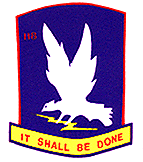|
SP5 Donald F. Roof, CE on Bandit
36's aircraft remembers the Feb 2 mission, "When the Marines
first put the call out, they requested immediate fire support
as they were under attack. CPT Bahnsen was the AC(aircraft commander)
and Larry Mobley was the co-pilot. When CPT Bahnsen answered
the radio call, the Marine on the radio said,'Who the hell is
Bandit 36'. After CPT Bahnsen straightened him out, off we went.
After the in air briefing, we arrived at the site where the platoon
was under attack. The Marines marked with smoke and we made several
firing passes with rockets, machine gun and the 40MM grenade
launcher from our ship(Hog). Things quieted down and then they
asked if we could take out their casualties. At the time we still
had ordnance left, so we got rid of everything on our next pass.
We let go all the rockets and 40 MM because we were too heavy
to take the casualties."
"We then went in and CPT Bahnsen
gave the controls to WO Mobley, much to my surprise. WO Mobley
did a great job of getting in and out with the heavy load. We
received fire as we went in and had to turn around in the small
pickup zone(PZ) to get out. As we went in, the other Bandit aircraft
informed us they were out of ordnance except for their doorguns,
which really added to the excitement!"
"When we landed the Marines
loaded their wounded casualties. Westermeyer our Gunner continued
to place fore on the VC positions(across a small stream), but
I couldn't because I was on the wrong side. I left the aircraft
and went to the other side to help provide covering fire for
the Marines who were loading the wounded. All went OK coming
out, but as we were clear of the PZ, someone opened up on us
again with an automatic weapon, but did not hit us. "
"On the way back to base that
night, CPT Bahnsen chewed my ass out royally for leaving the
ship to provide covering fire on the other side of the aircraft.
But I always felt that he understood what I was doing and why.
He just wanted to be Bandit 36."
|
